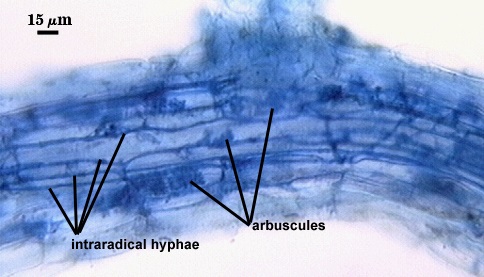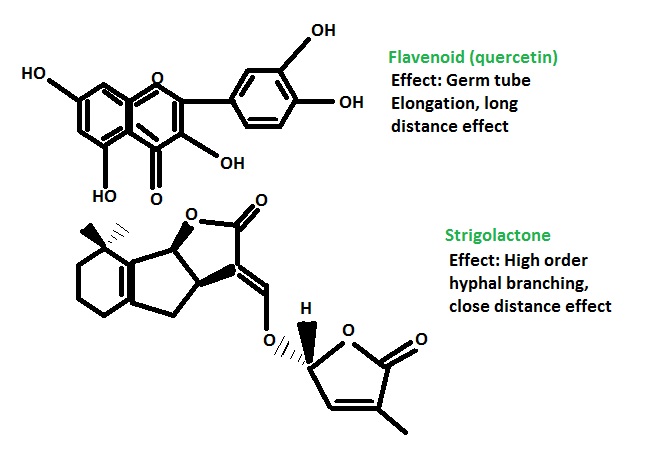
Interactions
Glomus intraradices is heavily dependent upon a host for proliferation and overall survival. This relationship is mutualistic, however is stacked heavily in the favor of the plant. The fungus needs a host or else it must repeat sporulation and dormancy until it happens to colonize a plant’s root hair, or until it dies completely. True the plant benefits by increased nutrient uptake efficiency; however it is not a necessity for plant growth. This fact, in tandem with the findings shown in this research article by Silke Kloppholz et al. suggests that originally the Glomus intraradices was in fact a parasite.
Any arbuscular mycorrhizal fungi acts similarly to a parasite, such as the fungus Phytophthora infestans which caused the Irish Potato Famine, and therefore leads to what is perceived by the plant as an infection; an infection that produces additional water and nutrients, but an infection none-the-less. So the plant actually secretes various hormones signaling infection to the rest of the body, and this results in the plant’s defense system attempting to rid itself of the fungi. To combat this, Glomus intraradices secretes an enzyme that neutralizes the plants defenses, called SP7 (Kloppholz et al. 2011).
First however, before contact is made, the fungus responds to several chemical signals given off by the plant, and these chemicals directly affect hyphal branch rate given relative location to their target root as seen in figure 2 of this article. Immediately after sensing the presence of flavenoids depicted in the figure below created by Michael Vogt with information from Nadal and Paszkowski (2013), the fungus switches from an energy conserving lifestyle to an energy burning lifestyle and is wholly committed to colonizing the plant, for if it doesn’t the fungus will deplete all energy stores in the spore and will die.
Once the fungus establishes itself within the root system of the plant via hyphopodium, it initiates a mutualistic symbiotic relationship. The plant then donates fatty acids and glucose and the fungi donate nitrogen as well as phosphorous and other minerals from the surrounding soil (Nadal and Paszkowski 2013).
There has been much research lately into the industrial application of Glomus intraradices purposefully onto agricultural crops to increase yield. This is driven by the boom in population, which is expected to require a 70% - 100% increase in total output by the time the human population reaches 9 billion people in 2050 (Ceballos et al. 2013). Purposely colonizing crop roots with fungi may increase crop yields in a more natural way, resulting in healthier, chemical free food for a growing human population.
<Reproduction Home Interesting Facts>

